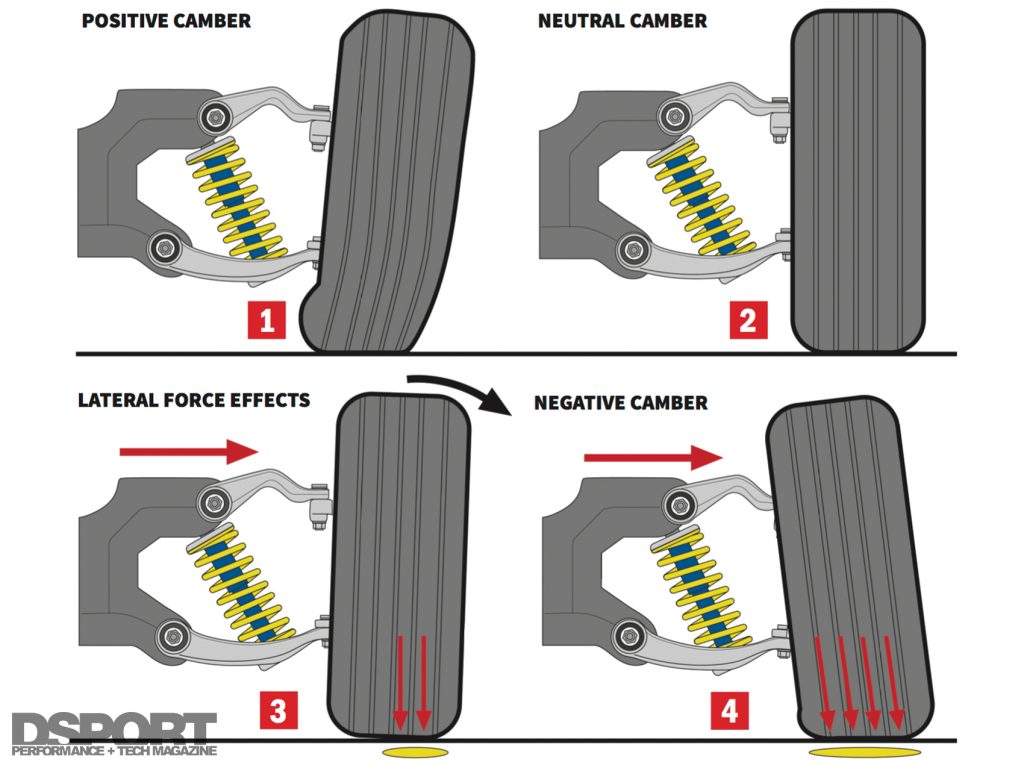

When the top of the tires tilt away from the center of the vehicle you have positive camber, and when the top of the tires are tilted inward you have negative camber. What is Camber?Ĭamber is the angle of the wheel relative to the vertical of the vehicle, and depending on the tilt, is either considered positive camber or negative camber. Proper wheel alignment is essential to maintaining vehicle and tire longevity, while also ensuring that your ride is both safe and comfortable. While you may not find it necessary to become acquainted with terms such as camber, caster, and toe, it is beneficial to understand the workings of these three major alignment parameters. Not everyone is familiar with the terminology associated with wheel alignments.

Uneven tyre wear: Excessive camber height can cause the tire to wear unevenly, leading to reduced tire life and increased maintenance costs.Providing excessive road camber height can have several disadvantages.

It is important to note that.” Disadvantages of excessive road camber “These values provide general guidance only and depend on local conditions, traffic volume, and other factors. The Indian Road Congress (IRC) provides recommended values for camber in road design, based on the type of road surface. Recommended Values of Camber in Road For Different Types of Road surface by IRC: This helps to promote safe, efficient, and sustainable transportation for all. Overall, camber is a key design feature in road engineering. Camber also helps to reduce tire wear by distributing the load evenly across the tire surface, promoting longer tire life. Negative camber improves tire contact with the road on straight sections, increasing traction and reducing hydroplaning risk. This in turn results in decreased skidding and improved stability. “Moreover,” positive camber assists vehicles in remaining centered on the road while turning. Advantages of Camber on RoadsĬamber provides several advantages for road safety and efficiency. On the other hand, they use negative camber on straight sections to enhance tire traction and lower the risk of hydroplaning in wet conditions. They use positive camber on curves and turns to offer better stability and prevent vehicles from sliding off the road. Road engineers provide camber to promote safe and efficient driving.

EXCESSIVE NEGATIVE CAMBER FULL
Smart roads- 6 Smart road technologies Full Guide Significance of road camber However, excessive positive camber can lead to uneven tire wear and decreased handling performance. This can provide improved stability and handle in certain driving situations, such as high-speed cornering. Positive camber refers to the angle of a vehicle’s wheels where the top of the tire tilts outward from the centre of the vehicle. Here’s a list of the types of camber used in road design and construction: Proper camber design and construction are crucial to improve road safety, reduce accidents, and ensure adequate drainage and vehicle stability. The road’s camber is usually indicated by the ratio 1:n or as a percentage.
EXCESSIVE NEGATIVE CAMBER DRIVER
This slope is designed to provide several benefits, including improved drainage, enhanced vehicle stability, and better driver visibility. Camber in roads is the slope or angle built into the road surface, typically seen on curved or sloped sections of the road.


 0 kommentar(er)
0 kommentar(er)
